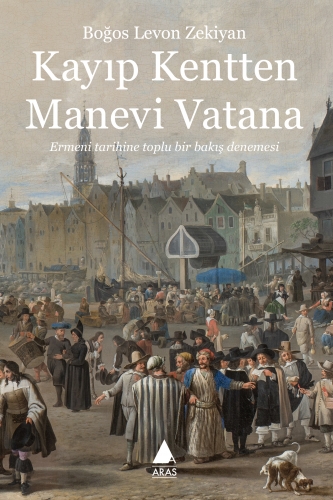
Kayıp Kentten Manevi Vatana – Ermeni tarihine toplu bir bakış denemesi (From the Lost City to the Spiritual Homeland – A study taking an overall look at Armenian history)
Author: Boğos Levon Zekiyan
Published: Aras Yayıncılık, İstanbul, 2018
ISBN: 9786052100165
Language: Turkish
Number of pages: 255
The book titled Kayıp Kentten Manevi Vatana (From the Lost city to the Spiritual Homeland), written by the Archbishop of the Armenian Catholic Church of Istanbul (the spiritual leader of Turkey’s Catholic Armenian community) Professor Boğos Levon Zekiyan, was published during the past months by Aras Yayıncılık. The author of the book Zekiyan, apart from his duty as an archbishop, also serves as the High Representative of the Venice Mekhitarist Congregation and is a well-known Armenologist, philosopher, and theologist.
In this book, Zekiyan (based on the research he has conducted in his academic career focused on philosophy and theology and the experiences he has gained as a religious official) brings light to the roots, identity, and world of thought of the Armenians, emphasizes the special significance of Venice to the Armenians, and lastly, touches upon some of the aspects that influence the Turkish-Armenian relations. As the publisher has stated in the beginning of the book, this book is actually a revised translation of his book in Italian titled L’Armenia e gli armeni – Polis lacerata e patria spirituale: la sfida una sopravvivenza that was a compilation of certain articles that Zekiyan had written between 1981-1996 (for the revised translation, some chapters were removed, and one chapter was added).
In his book, Zekiyan indicates that the history of Armenians dates back to approximately 2500 years and depicts an “Armenia” denoting the lands that Armenians came into existence and lived throughout history. Like many authors that narrate Armenian history, Zekiyan indicates that, apart from some exceptions in history, Armenians -despite all their efforts for their independence- had constantly found themselves caught in between the conflicts of political formations larger than them (Byzantine, Persia, Ottoman, Russia, etc.) and had come under their sphere of influence. But despite all of this, ultimately, Armenians have succeeded in sustaining the Armenian language and their national religion Christianity, both of which have key importance for their identity.
Zekiyan indicates that the Armenians have acquired certain distinct traits within the framework of the difficult geographic conditions in which they lived and their historical experiences. According to Zekiyan, these are among the characteristics that define Armenians: individual and collective entrepreneurship, adventurism, indomitableness, responding fast and swiftly, irritable temperament, and an “almost hereditary repulsion against compromise”.
The entrepreneurship, adventurism, and indomitableness traits of the Armenians that Zekiyan has highlighted have probably played a key role in Armenians spreading across various places in the world. Armenians, known for their affinity for commerce and craftsmanship, had formed both large and small communities in the significant commercial and political centers of the known world and had effectively interacted with and adapted to the native populations of those places.
According to Zekiyan, one of the most important "colonies" that the Armenians have formed in foreign lands is in Venice. To Zekiyan, throughout history, Venice has been one of the most important cultural and commercial centers of Armenians and has allowed Armenians to efficiently meet and intermingle with Western societies. It should be reminded to the readers that the first Armenian printing press in history was established in Venice. The Mekhtarist Congregation represented by Zekiyan is also located in Venice. Although it is a religious organization devoted to Catholic Christianity, throughout history, the Mekhtarist Congregation has served as a very important cultural and educational center for Armenians of every denomination and has contributed to the consolidation of Armenian nationalism.
Based on the experiences of and the situations and conditions encountered by the Armenians throughout the centuries, Zekiyan presents many concepts to the reader and discusses them by spreading them throughout the book. These can be presented as examples of such concepts: immigration, integration, assimilation, diaspora, ghetto, colony, cosmopolitanism, identity, culture, world view/perception of life, state, ecumenism. With such discussion, Zekiyan actually pushes the reader (the individual) to question their relationship with their community, their state, and the world.
In his book, Zekiyan also refers to the factors that influence Turkish-Armenian relations. While Zekiyan does present a narrative that considers the 1915 events as a genocide, he has not made this genocide discourse the main basis of his book. However, the author does include stereotypical aspects of the genocide discourse regarding the 1915 events. It is perhaps not surprising that Zekiyan, by not giving any space to the historical documents (dating back to past centuries) that are no doubt contained in the Vatican’s archives, has adopted the discourse of the Mekhtarist Congregation that puts forth Armenian nationalism. However, by doing so, the author has distanced himself from the objectivity that would be expected of him.
In this book, for example, it is mentioned that the Armenian relocation and resettlement was part of a pre-designed extermination plan, and the European Parliament’s 18 June 1987 genocide resolution is referred to as if this resolution has any kind of validity and bindingness. At the same time, like many Armenian authors neglect to do, Zekiyan has neglected to mention the large-scale violent acts perpetrated by armed revolutionary Armenian gangs before, during and after 1915 and the devastating security dilemma that this violence had created for the Ottoman Empire.
Alongside this, Zekiyan touches upon a salient issue within the context of the genocide discourse. Zekiyan indicates that the members of the Committee of Union and Progress were “educated, cultured” individuals who knew “the principles of life” and “good manners and etiquette”. In this respect Zekiyan questions how such individuals could have been the perpetrators of such “a grim disaster” (he is referring to the 1915 events and the relocation and resettlement of Armenians). When taking into account what he has explained in the other parts of his book, according to Zekiyan, the “genocidal” approach did not originate from the culture of the Ottoman Empire or from its Millet System. Instead, according the author, this approach had originated from the members of the Committee of Union and Progress being influenced by the approaches related to the concept of the nation-state that was emanating from Western countries. In fact, according to the author, there are a number of positive lessons to be derived for today from the Millet System of the Ottoman Empire.
Zekiyan also includes trauma-based perceptions that deeply influence Turkish-Armenian relations. The author mentions two trauma-based perceptions that influence Armenians: 1) Armenians cannot help but consider every Turk as if they are the members of the Committee of Union and Progress (who are claimed to have perpetrated the "genocide"), 2) Armenians have a deep-seated fear towards Turks and cannot get rid themselves of the notion that “trusting Turks would be more idiocy than naivety”. The author also mentions two trauma-based perceptions for Turks: 1) A powerful societal conviction that there is an international conspiracy against Turkey (in other words, the “Sevres Syndrome”) and the concern that Armenians and the Armenian issue will be exploited in this framework, 2) The notion that the Armenians, who were the “loyal nation” during the Ottoman period and who had achieved everything, had still betrayed the Turks, that is to say, the notion that the Armenians are “ungrateful” and “non-appreciative”. Zekiyan is of the opinion that, to improve the relations between Turks and Armenians, these types of trauma-based perceptions need to be overcome.
Even though it is not possible for us to agree with some of Zekiyan’s opinions (especially regarding the 1915 events), this book contains interesting information regarding Armenians and Armenianness. It constitutes an important resource for those who wish to receive concise introductory information on the history, identity, and culture of Armenians or for those who are of Armenian descent and wish to read a study with interesting and important evaluations on their own Armenian roots.
© 2009-2025 Center for Eurasian Studies (AVİM) All Rights Reserved
No comments yet.
-
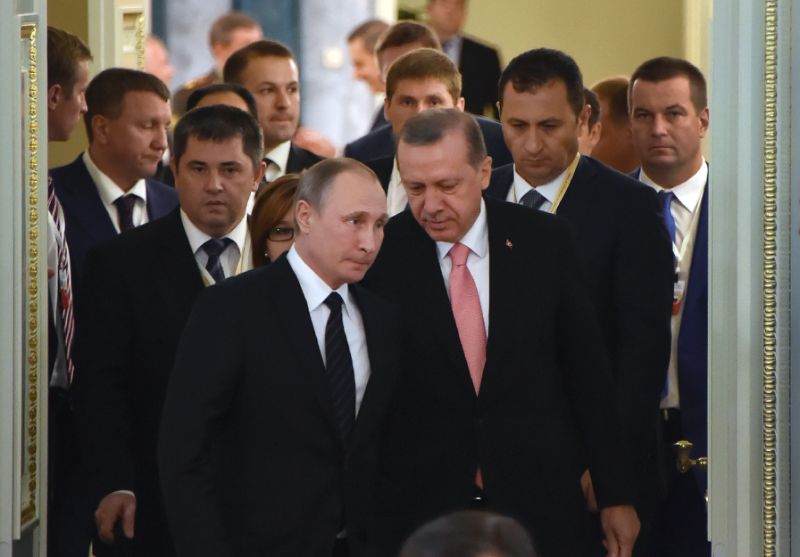 THE NEWLY EMERGING POLITICAL CONFIGURATION IN THE SOUTH CAUCASUS
THE NEWLY EMERGING POLITICAL CONFIGURATION IN THE SOUTH CAUCASUS
AVİM 06.09.2016 -
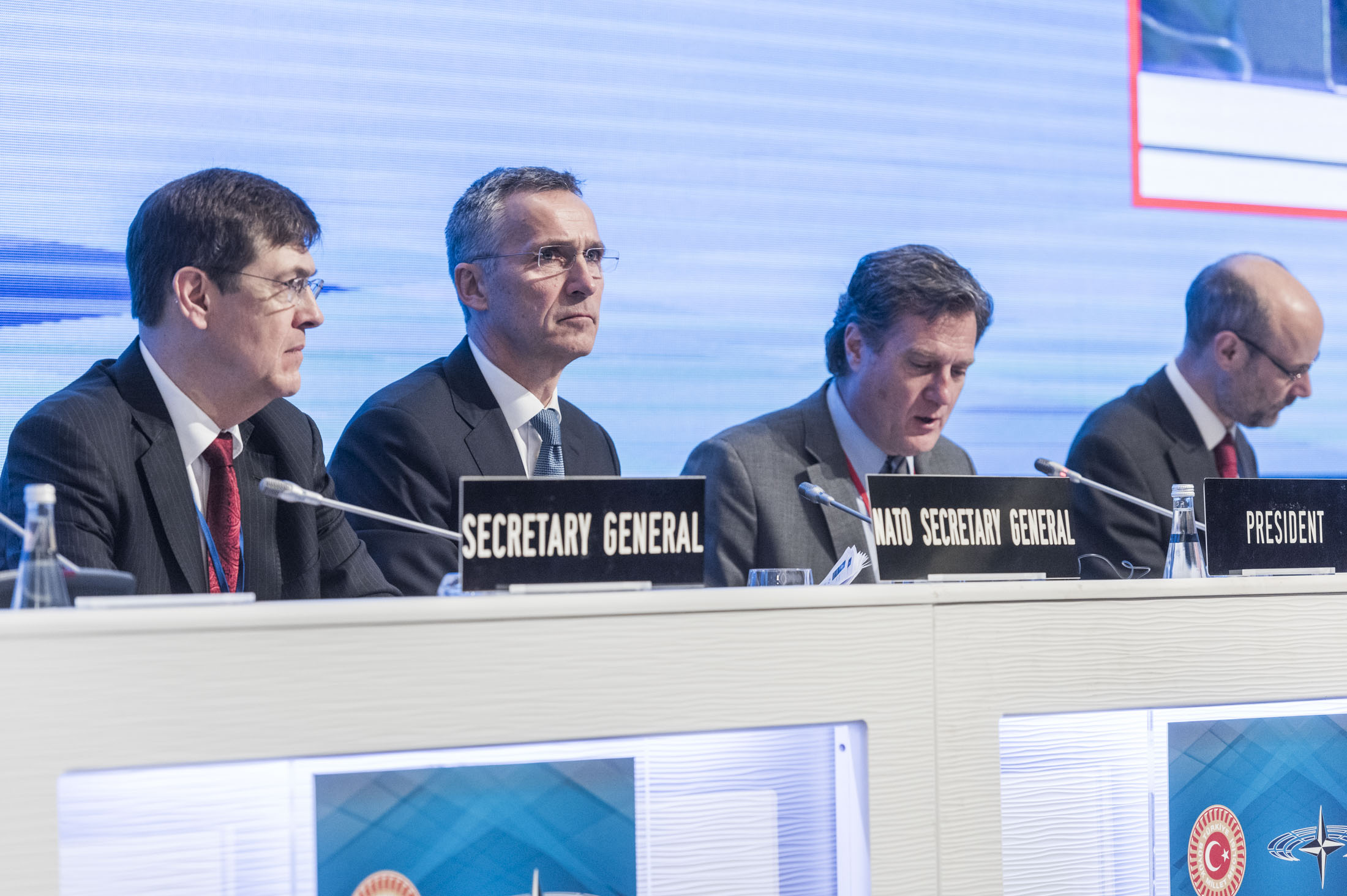 WHY IS ARMENIA SITTING IN A NATO FORUM?
WHY IS ARMENIA SITTING IN A NATO FORUM?
AVİM 22.11.2016 -
 THE CLAIMS AGREEMENT BETWEEN TURKEY AND THE UNITED STATES OF AMERICA SIGNED AT ANKARA, 25 OCTOBER 1934 AND ITS LEGALLY BINDING IMPACT ON COMPENSATION CLAIMS OF US CITIZENS OF ARMENIAN DESCENT
THE CLAIMS AGREEMENT BETWEEN TURKEY AND THE UNITED STATES OF AMERICA SIGNED AT ANKARA, 25 OCTOBER 1934 AND ITS LEGALLY BINDING IMPACT ON COMPENSATION CLAIMS OF US CITIZENS OF ARMENIAN DESCENT
AVİM 14.01.2020 -
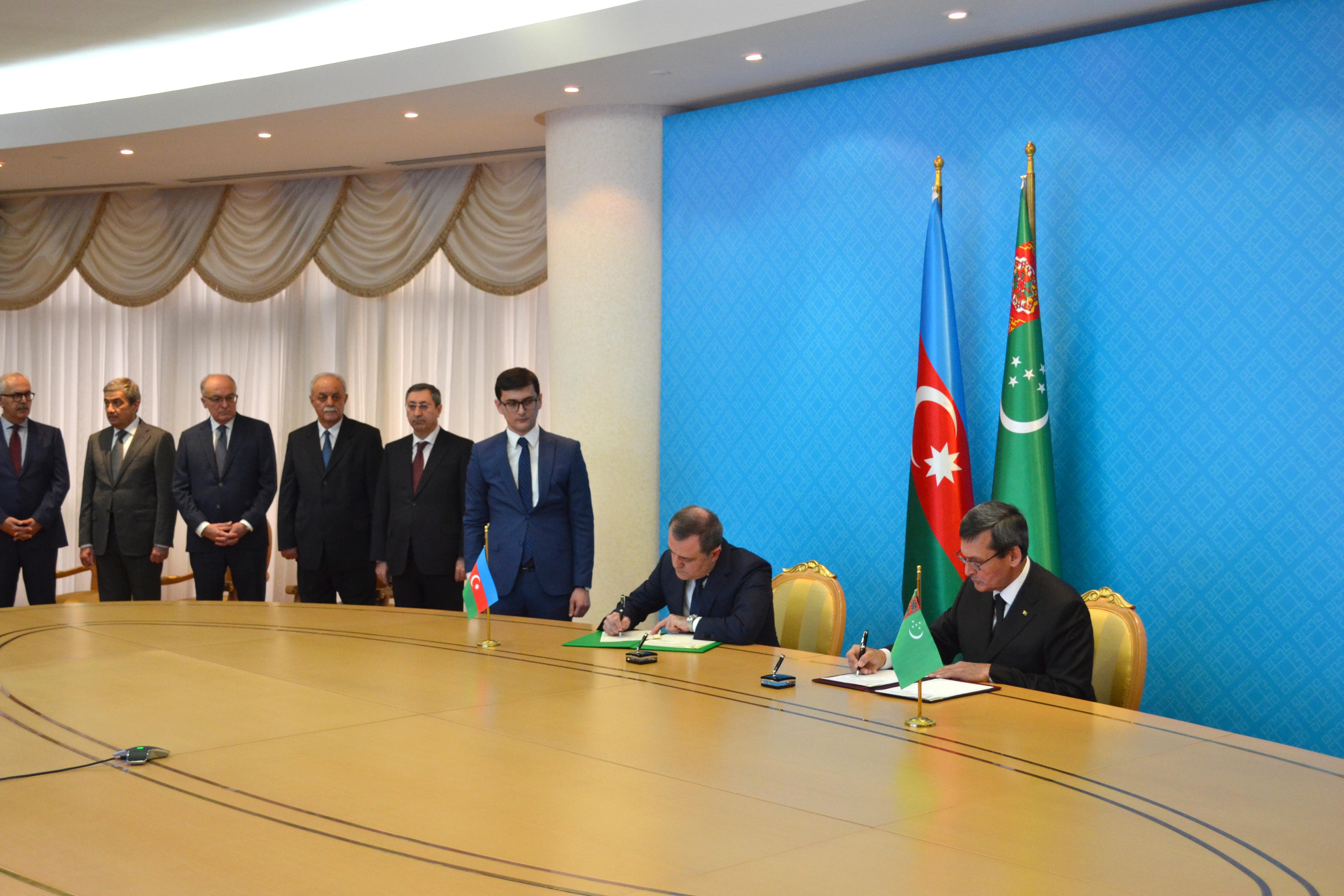 THE AZERBAIJAN-TURKMENISTAN AGREEMENT FROM A TURKISH PERSPECTIVE
THE AZERBAIJAN-TURKMENISTAN AGREEMENT FROM A TURKISH PERSPECTIVE
AVİM 11.02.2021 -
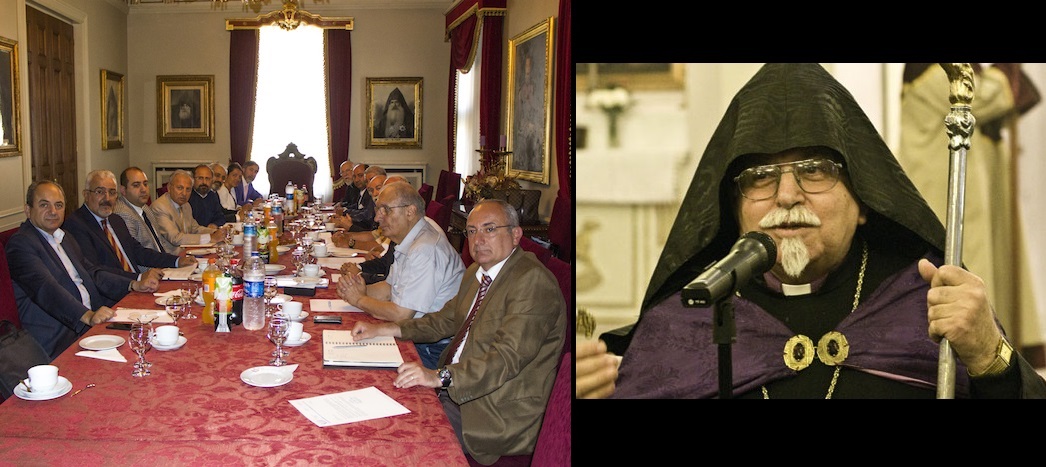 WHY IS THE TRADITIONAL PROCESS REGARDING THE PATRIARCH ELECTION BEING OPPOSED?
WHY IS THE TRADITIONAL PROCESS REGARDING THE PATRIARCH ELECTION BEING OPPOSED?
AVİM 15.11.2017
-
 HISTORIC MEETING BETWEEN PRESIDENT XI OF PRC AND PRESIDENT MA OF ROC TAKES PLACE IN SINGAPORE
HISTORIC MEETING BETWEEN PRESIDENT XI OF PRC AND PRESIDENT MA OF ROC TAKES PLACE IN SINGAPORE
Mehmet Oğuzhan TULUN 09.11.2015 -
 H. RES. 220 – A CONFLATION OF PAST AND PRESENT
H. RES. 220 – A CONFLATION OF PAST AND PRESENT
AVİM 21.11.2017 -
 ISRAEL SAYS KERRY REMARKS ON IRAN NUCLEAR THRESHOLD 'NOT ACCEPTABLE'
ISRAEL SAYS KERRY REMARKS ON IRAN NUCLEAR THRESHOLD 'NOT ACCEPTABLE'
Hande Apakan 13.04.2014 -
 APPROACHING EARLY ELECTIONS IN ARMENIA
APPROACHING EARLY ELECTIONS IN ARMENIA
Tutku DİLAVER 18.06.2021 -
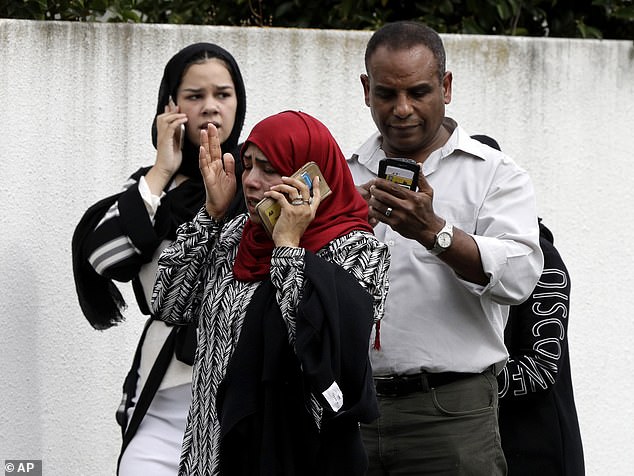 THE EUROPEAN PARLIAMENT RESOLUTION AND THE TERRORIST ATTACK AT CHRISTCHURCH
THE EUROPEAN PARLIAMENT RESOLUTION AND THE TERRORIST ATTACK AT CHRISTCHURCH
Teoman Ertuğrul TULUN 15.03.2019
-
25.01.2016
THE ARMENIAN QUESTION - BASIC KNOWLEDGE AND DOCUMENTATION -
12.06.2024
THE TRUTH WILL OUT -
27.03.2023
RADİKAL ERMENİ UNSURLARCA GERÇEKLEŞTİRİLEN MEZALİMLER VE VANDALİZM -
17.03.2023
PATRIOTISM PERVERTED -
23.02.2023
MEN ARE LIKE THAT -
03.02.2023
BAKÜ-TİFLİS-CEYHAN BORU HATTININ YAŞANAN TARİHİ -
16.12.2022
INTERNATIONAL SCHOLARS ON THE EVENTS OF 1915 -
07.12.2022
FAKE PHOTOS AND THE ARMENIAN PROPAGANDA -
07.12.2022
ERMENİ PROPAGANDASI VE SAHTE RESİMLER -
01.01.2022
A Letter From Japan - Strategically Mum: The Silence of the Armenians -
01.01.2022
Japonya'dan Bir Mektup - Stratejik Suskunluk: Ermenilerin Sessizliği -
03.06.2020
Anastas Mikoyan: Confessions of an Armenian Bolshevik -
08.04.2020
Sovyet Sonrası Ukrayna’da Devlet, Toplum ve Siyaset - Değişen Dinamikler, Dönüşen Kimlikler -
12.06.2018
Ermeni Sorunuyla İlgili İngiliz Belgeleri (1912-1923) - British Documents on Armenian Question (1912-1923) -
02.12.2016
Turkish-Russian Academics: A Historical Study on the Caucasus -
01.07.2016
Gürcistan'daki Müslüman Topluluklar: Azınlık Hakları, Kimlik, Siyaset -
10.03.2016
Armenian Diaspora: Diaspora, State and the Imagination of the Republic of Armenia -
24.01.2016
ERMENİ SORUNU - TEMEL BİLGİ VE BELGELER (2. BASKI)
-
AVİM Conference Hall 24.01.2023
CONFERENCE TITLED “HUNGARY’S PERSPECTIVES ON THE TURKIC WORLD"









